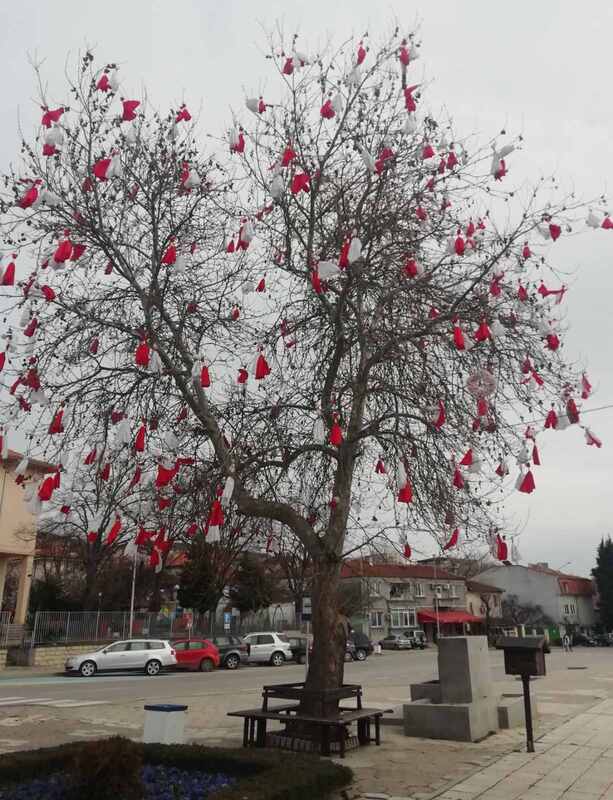The first of March is one of the most ancient Bulgarian holidays. There are many legends about the holiday and its main symbol - the martenitsa. The holiday marks the beginning of the new season, and all the customs are related to the revival of nature. The mistress of the house is a central figure in the rituals of this day. It was believed that on March 1, the cold goes deep underground. But despite this, people knew that throughout the month the weather can be very changeable - from bitter cold to very warm days. March is the month of Resurrection – – purification and a new beginning of the natural cycle. However, in the month of March, people were prepared for sudden changes in the weather - from sun to snow and blizzards.
The most famous custom is the adornment of people and young animals with Martenitsa (twisted white and red woolen thread) on March 1 - the day of the arrival of Baba Marta.
The custom of tying Martenitsa is known in Bulgaria, Romania, Moldova, Albania, Greece, Macedonia and Serbia. In Romania, martenitsa are tied on the hands only of women and small children, and men can only wear martenitsa in a hidden place, for example in the shoe. In Greece, martenitsi are tied only on children's hands. In Bulgaria, martenitsi are also tied to young animals and trees, also to men.
Before the sun appears on the horizon, the oldest woman in the house gets up early and does a thorough cleaning. Everything in the house that is red is taken out - tablecloths, mats, sashes, aprons, etc. People believed that the red color was Baba Marta's favorite and so they tried to please her. Young maidens and brides and children are tied with martenis for health. The young go outside so that the Grandmother can "see" them and be happy for them, and the old women stay at home so as not to anger her.
On this first day of March, bonfires are lit, the courtyard is walked around and various metal objects are rattled and wishes are made. The goal is to drive away the snakes and lizards.
The martenitsa floats until one sees a stork, a swallow or a blossoming fruit tree. Then he leaves it under a stone and after half a year checks if there are ants underneath. If a girl looks under the stone and on the martenitsa and there are many ants - the chosen one will be poor. In order for the children to be ruddy and healthy, martenitsi are tied to a fruit tree. And in order to expel evil from their home, they throw her into running water. Today we also observe these rituals. And we, like our ancestors, on March 1 choose a day of the month and whatever the day is (cold, stormy, warm, clear), that will be the whole year for the one who chose it.
© 2023 Iliana Dechkova

